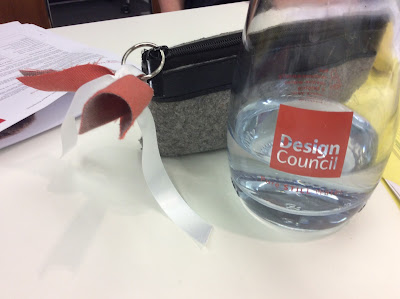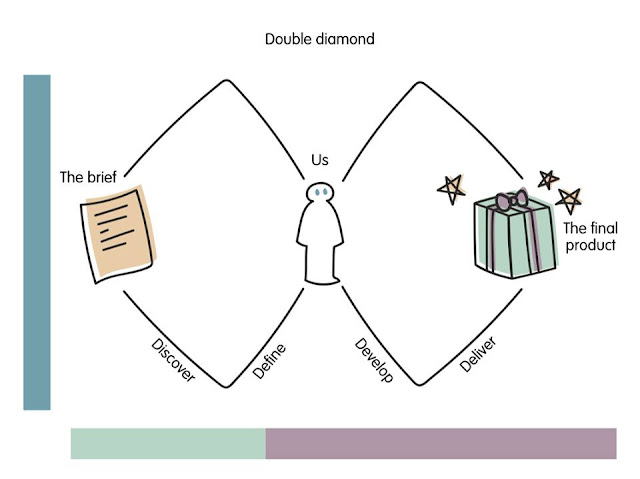|Outward Facing Project-Design Academy|
Design
academy all started with an application process. Getting onto this programme
was a big achievement of mine and I met some very intriguing people who I
learnt lots from. This programme was 4 days. 3 days within Manchester and then
1 day at the Design Council in London.
Day one was
all about learning about social challenges and then applying design approaches
to these and how learning by doing and that great design can improves lives. We
were given a challenge:
‘How might we help people
with care needs to manage their own condition?’ We were placed in groups of mixed
disciplines and each group had a different challenge.
During the
time at Design Academy we had a ‘walk in’ experience and went to a gallery to
evaluate how design has helped our experience as a group.
Learning
frameworks for System for Innovation for example:
Framework + Process +
Methods = System for Innovation
Creating
personas was also a great way to figure out the best representation of a type
of person. We created several and then decided upon an Autistic man who lived
away from home.
We chose this because it felt more focussed than the other
broader topics. As the days went on it was more about redefining the brief to
be as clear as possible.
 |
| Persona - Sheldon Smith |
Advice
included:
·
Communicate
Visually
·
Make
it people centred
·
Collaborate
·
Investigate
·
Learn
·
Investigate
again
I found that
the way the programme worked really supported my dyslexia. Using post it notes
and big Sharpie pens to record a single word and having text placed within
diagrams and mind maps helped to get my thought processes onto paper. These
techniques not only helped my dyslexia but how I tackle a brief, but having to
create questions for ourselves before going into a brief also helped my
thinking.
We learnt
helpful design methods and a lady from ESRO also came in to share with us how
she undertakes research. I learnt how to create Prototype Plans and other
contributions to great research such as : Costing, Stakeholder Maps, Emotions
and Activity Project Posters.
After lots
of discussion we decided as a group that we would re-define the challenge and our
new question was:
‘How can we communicate
the ways to manage people on the Autism Spectrum with their own care needs?’
We met
regularly as a group even though we did have 1 non-engaged member. We would try
to communicate as much as possible through Facebook. I made keyrings with
different textures as I felt having something physical for the presentation
would be a great idea.
On our 4th
day we travelled to London to present in front of a panel of people from Design
Academy. I enjoyed this experience so much because it felt like I was in the
real world of design. It prepared me more for when I finished University than
any work done at uni – helped me to know how to follow a brief and pick it
apart because of the skills I’ve learnt from this. I had really good feedback
on how clearly I spoke and how confident I was. I feel like this was because
the resources we were given had provided me with a really clear structure and I
used this to stage my own presentation. Since this experience I have been
putting this way of thinking into practice when tackling my own work and my own
briefs. The idea of designing something for a public issue to either bring
awareness or to improve life for the better is something which has really
helped me. It’s not just about thinking what I like, it’s about what other
people like. It gives the work meaning and value.
 |
| 1 of 40 Keyrings |
 |
| Design Council Member with Keyring On There PencilCase |



Comments
Post a Comment